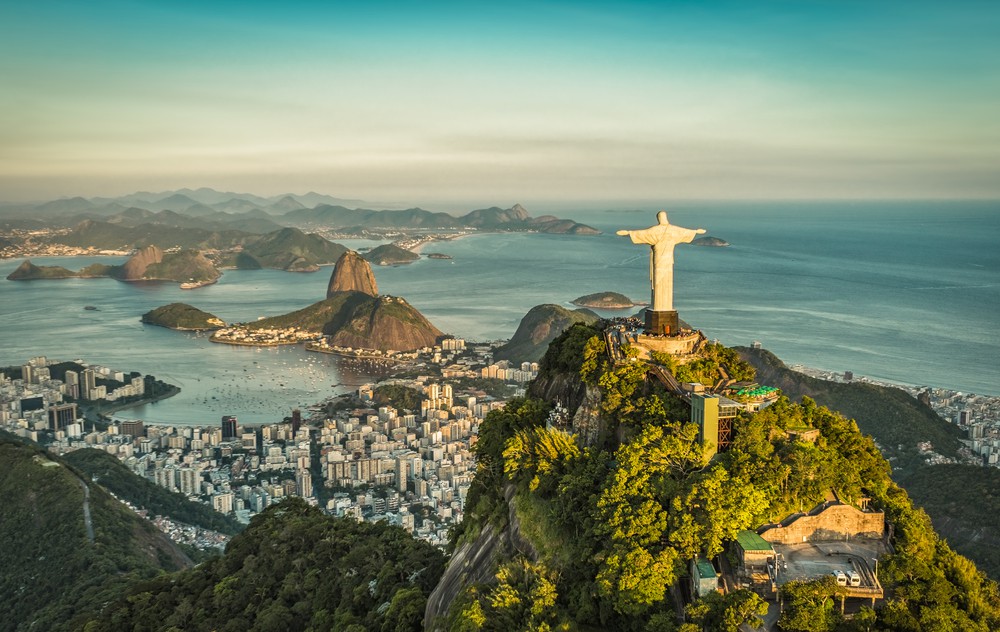
After writing my “Postcard from Brazil“, I realized it would be very difficult for most of my fellow lockdown skeptics to check my numbers about the progress of CIVID-19 in Brazil, as this information is generally only available in local Portuguese language media. The western press corp of propagandists are completely obsessed with Brazil being a bubbling cauldron of death and despair, and actually doing any investigation on the issue would result in stepping outside the official narrative. Can’t have that!
I wanted to do my part to bring some alternative information on South America to a Western audience. I’ll link to the local articles for proof, but they are in Portuguese and most are paywalled. See what you can do. The fact is, the story of Brazil and Covid is a fascinating one. I think it leads to some interesting conclusions about immunity, lockdowns, and individual freedoms. CliffsNotes: immunity is important, lockdowns don’t work, and freedoms are worth dying for – but we already knew that.
Recent history lesson. In Brazil, the first states affected by Covid were São Paulo, Rio De Janeiro and Amazonas. Rio and São Paulo are epicentres of tourism with multiple daily flights to Europe, and big Italian diaspora populations. They are also very dense states with multiple large cities. Amazonas is a strange one. It contains the majority of the Brazilian Amazon, is remote, and I have no idea why it got infected so early. The epidemic there centred on the city of Manaus, where there were some real horror stories that got out onto the news. This is less to do with the deadliness of the Wuhan Flu, and more to do with the fact that Manaus is a big city in the middle of a jungle, with no road access. I have no idea who thought this was a good place for a city, but here we are. All supplies (testing kits, PPE, doctors, grave stones, etc.) had to either be flown in, with flights often delayed or cancelled due to rainforest weather, or sent up the river. The city also has a huge indigenous population, who tend, tragically, to be shockingly poor and in very bad physical condition.
From Manaus, the epidemic spread quickly out to the north east of the country. The big cities that got slammed hard were Manaus, São Luis, Fortaleza, and Belem. Remember all these names, along with Rio.
I’d like to pause to make a very important point here. While social distancing measures were put in place in all these states, they were barely adhered to. Uber rich São Paulo probably did the best at keeping people inside, but the northeastern and Amazonian states are among Brazil’s poorest. People needed to keep working to survive. And Rio: Hah, forget it. Anyone who has spent any time there knows that you simply can’t tell the cariocas what to do. Distancing there made Sweden look like North Korea. By the time Bolsonaro started demanding the economies re-open, most people had already decided to go back to work.
An interesting aside: Brazil, for all the talk of irresponsibility, followed the ‘flatten the curve’ strategy as it was originally stated, and did so well. The laser focus was on hospital beds. Every night, what was reported on was the occupation level of ERs, not deaths and cases. When states felt they had enough beds, ventilators, stocks of drugs, etc…they started to reopen. Flatten the curve never morphed into the ridiculous ‘zero Covid’, like elsewhere in the world. And Brazilian hospitals (with the exception of Manaus) never collapsed or even came close. Most were pressured in the early days, but never were more than 80% occupied. So, they started re-opening.
You can read some breathless English language coverage about how foolish it was to re-open the economy with rising case numbers, but I’m sure you’ve heard it before.
Here, however, if you want a chuckle, is an outrageously bedwetting article from CNN. Totally non-hysterical headline: “Rio is sending their population to the slaughterhouse”… by opening restaurants (most of which were already open).
Okay, so….what happened then after the reopening in these states? Millions of dead? Rotting corpses piled on gurneys outside overflowing hospitals? Shopping malls stacked up with bodies? The only follow up is, strangely enough, in Portuguese, from local sources. Team Apocalypse never checked back in to see if its predictions came true.
Surprise! After some time, and some death, granted, numbers started falling in all the states that re-opened. First emergency beds, then hospitalizations, then deaths, then cases. And they didn’t just fall, they plummeted. And, months later, they stayed down. Interestingly enough, when the vírus was allowed to run its course, these states saw cases and deaths fall off a cliff right around the 20–25% infected mark, just like Milan, New York, Stockholm, etc.
I’ll give you this article, which talks about what actually happened.
Most people won’t be able to read it, unfortunately. So, I’ve extracted the charts for the cities in question to illustrate what they are talking about.
Manaus:
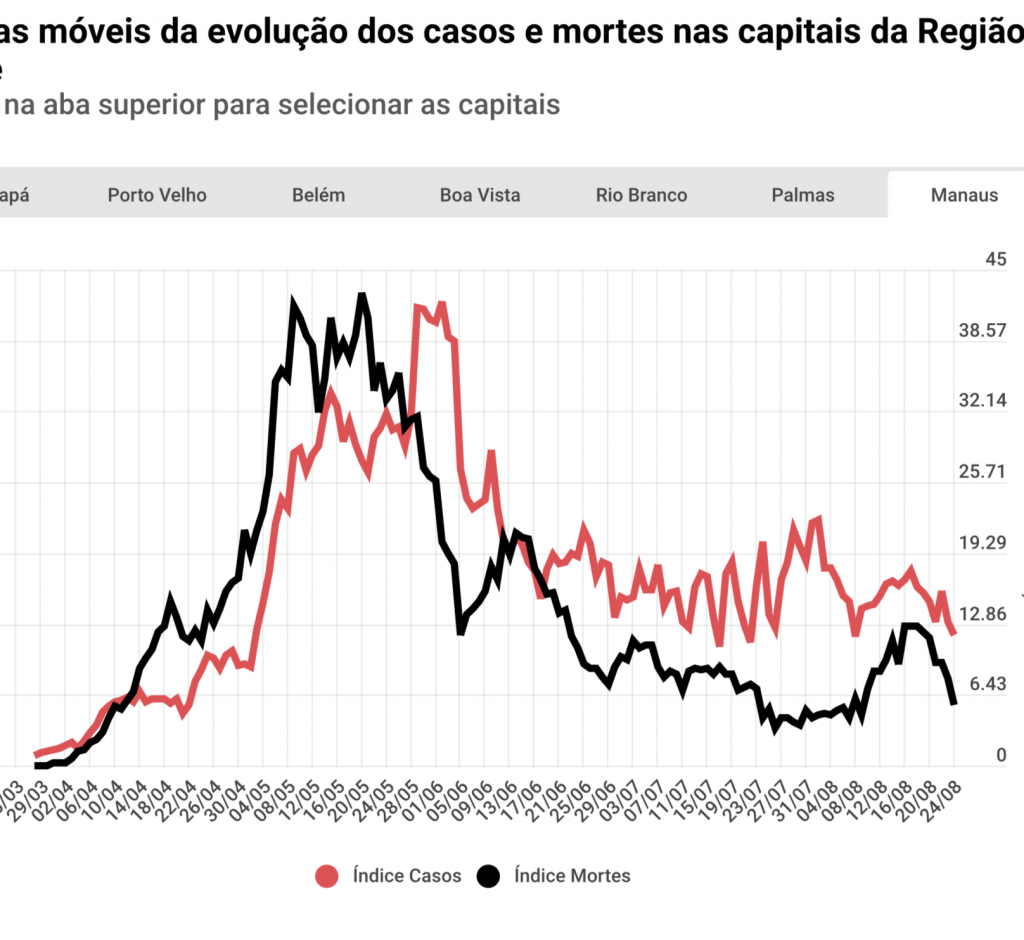
Fortaleza:

Rio De Janeiro:
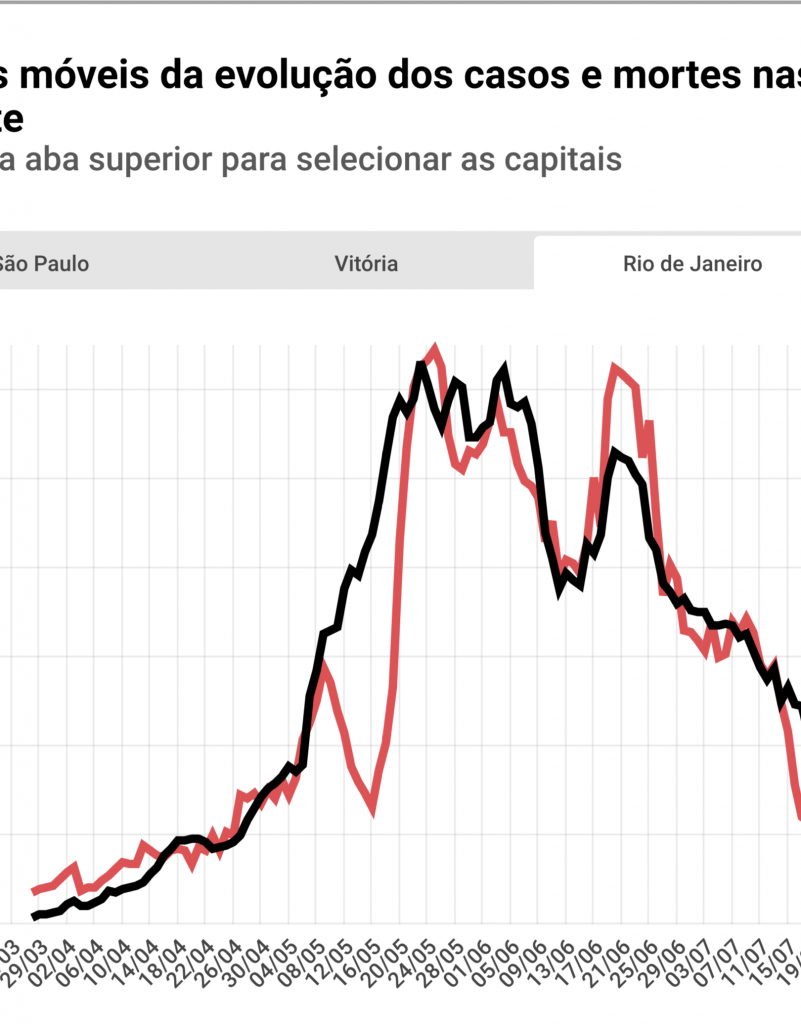
Belem:

São Luis:
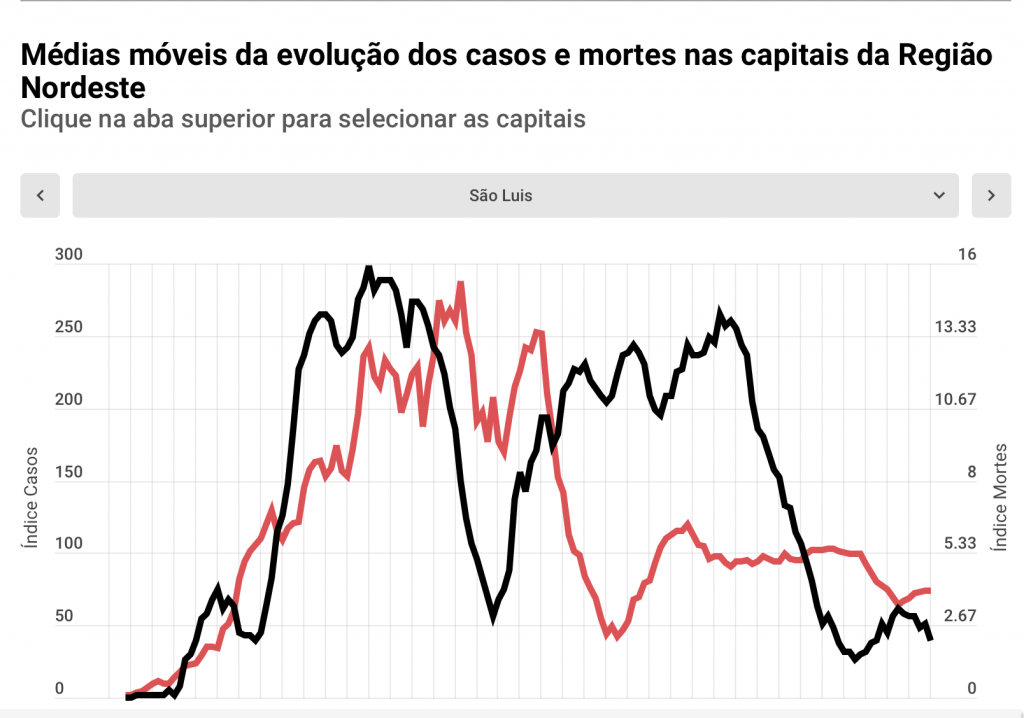
Those are quite the decline, aren’t they? Must have been the effects of the non-existent lockdowns, right Professor Pantsdown? It is, perhaps, worth noting that a lot of these places use Chloroquine as a standard anti-malaria treatment. Take from that what you will.
But, about why the curve fell. One of Brazil’s most respected left wing newspapers goes into depth about the fact that re-opening had no impact on the cratering curves. It is in Portuguese, but I’ll translate the title for you, which says all you need to know: “Covid Curve Suggests Higher Levels of Immunity and Second Wave Less Likely.“
Okay, so maybe these people being cited in these articles don’t know what they are talking about? Hardly. Brazil has, without a doubt, some of the world’s best epidemiolgists, virologists, and infectologists, and it is a pleasure to read their non-ideological takes on things. Why? I’d speculate it is because they have actually had consistent, day-in, day-out, on the ground experience dealing with real epidemics (zika, dengue, yellow fever) instead of researching them from the ivory tower. Nobody here generalises about how things might go based on the progress of the Spanish Flu, but instead rely on observation of the unfolding epidemic as it takes place. I’ve even read them putting forward the heretical theory that BLM protests in US states with high levels of immunity (New York, New Jersey, etc.) probably didn’t contribute much to cases, while states that had ‘suppressed’ Covid at first (Florida, California) and had low levels of immunity saw surges as an obvious result of the massive superspreader protests. Refreshing to leave bizarro world for a while, isn’t it?
My state, Espirito Santo, is Rio’s five million population northern neighbour. We also ended up hard hit, and were seeing 1,000+ cases a day, with our peak close to 2,000 a day, leaving close to 3,000 people dead in total (almost all of them frail senior citizens or the seriously unwell who would have died of something else in a year or so anyway). These are big numbers, but if nobody had told me there was an epidemic on, I wouldn’t have noticed. Hospitals handled this just fine. If this was the Black Death it was supposed to be, the bodies piling up in the streets would have been a dead give away, right? It seems crazy, after living in ES, that people want to lock down again in some European places because they hit 1,000 cases a day… in the whole country. Are you kidding me! Don’t they know they are just delaying the inevitable?
Here is the curve now for Espirito Santo, which is pretty much back to normal. Sure looks a lot like all the other curves we just saw. Doesn’t it just look like a natural bell curve based on a build up of immunity in the population?

No, must have been social distancing, right? Wrong. There is a wonderful Portuguese expression, o jetino brasileiro, or ‘the Brazilian way’. We saw a lot of restaurants add a loaf of bread to their menus to become bakeries (essential services) and stay open, and a lot of gas stations converting to bars at night. Many bars did ‘delivery’ right out to their terraces. Enforcement on partying is non existent and Brazilians love to party. Everyone talks about the rules and nobody follows them. The other day, I saw a police car roll by a big group of college students out on the piss and the officers give them a big thumbs up. People use masks during the day when they walk around and go shopping, but at night? Forget it.
Okay, but you say that Brazil is still seeing high death and case counts (although much lower, per million, than most European countries, including Sweden, and now pretty close to the five year average of excess deaths)? Yes, you are absolutely right. When an epidemic is allowed to move around a massive country like Brazil without constantly being squashed by repeated economy-destroying regional lockdowns, it affects different areas at different times, drives up their numbers, sees them fall, then moves on, hits other areas and drives up their numbers, affecting the overall numbers for the country while obscuring a lot of progress everywhere else (see: the Sunbelt Spike in the USA). Yet the media likes to pretend that this is due to governors ‘failing’ with their lockdowns as the epidemic moves to their area. Cue up the hysteria now about the US midwest, as the Sunbelt Spike has now been ended (without using, I might add, hard lockdowns).
In Brazil, while great swathes of the country are now basically back to normal, the case and death growth in Brazil is now being driven by a raging epidemic in the densely populated far south and the much poorer central core of the country. Here’s a map, published daily in the national newspaper. Red areas are where the epidemic is growing, pink areas are where it is stabilising, light blue is where it is slowing down, and deep blue is where it has been permanently reduced. Anyone who wants to see the progress of the epidemic in Brazil just needs to go to the Folha De São Paulo newspaper website and see this map updated. No need to read the articles.

The geniuses at Imperial College have reported Brazil’s R0 is now below one, but whether we can believe anything these cracking minds have to say is another story. Truth is that Brazil, due to size and diversity, will take a long time to stabilise overall. It is going to take time for this stability to show up in numbers. The insistence on treating Brazil, which is the majority of the South American continent, as if it was Switzerland, is one of the most aggravating things I have seen in the media. Not only is Brazil huge and diverse, but many, many people here need to work to survive and don’t have the luxury of lurching from lockdown to lockdown.
And there is good news on that front. Despite the ‘oh the economy cannot co-exist with a pandemic’ communist wannabes, Brazil’s economy took far less of a hit than its neighbours. Much like Sweden, while Brazil will enter a recession, it is much lighter than feared, and much less than that of the rest of Latin America.
Look at that! Retail sales are already back at pre crisis levels! And, most heartening of all, data on re-opening the economy early resulted in estimates that this brave act saved 318,000 jobs in São Paulo alone.
Okay, so, was it all worth it? We are still in early days, but Brazilians, like Americans, avoided house arrests, built up immunity and salvaged their economy, but paid for it with over 100,000 lives and counting (reminder, again, that, adjusted for population, this is far less than pretty much every European country, including the UK). Couldn’t they have saved themselves pain with a stricter lockdown?
Let’s test Brazil against its neighbours, because everyone insists on testing Sweden against Norway and Finland. Brazilians regard our Argentine rivals as rules-bound, elitist snobs. While nobody cares much for the opinion of France or Germany (Bolsonaro calling Macron’s wife “ugly” over the Amazon spat was a childish highlight of last year), when Argentina looks down on Brazil, it hurts. So when they were in rigid lockdown and laughing at out of control Brazil, it stung like hell.
We certainly aren’t crying for thee now, Argentina.

Peru? They enacted a brutal, ‘we will beat you if you go outside’ lockdown that made Melbourne look like a day at the park. Not just mandated masks, but face shields too! Did it work? Is “world’s worst death rate” considered success?

How about Venezuela? Surely a communist dictatorship could crush Covid with their brutal lock… whoops.
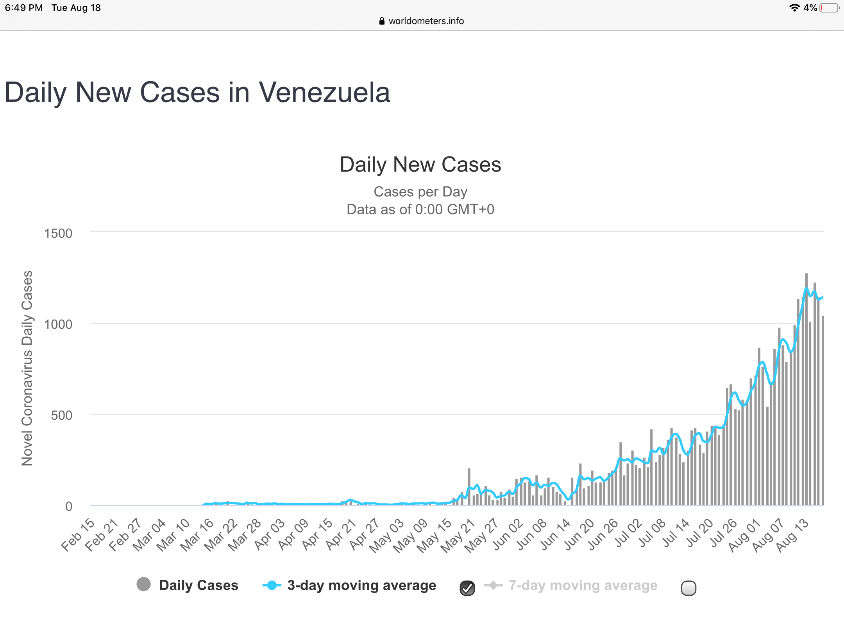
Maybe Colombia, who traded their reputation for the world’s most beautiful women and world’s best cocaine for the world’s longest lockdown, defeated Covid, right?… Oh, wait.
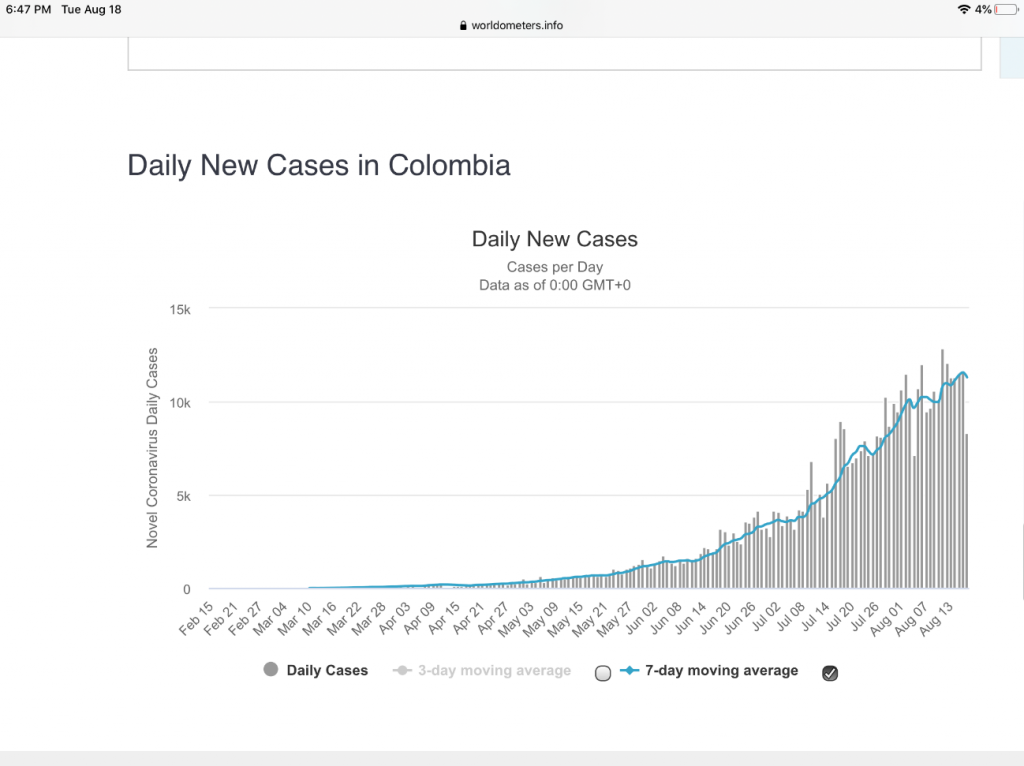
Why would Brazil have been any different? People without a single clue between them talk like Bolsonaro could have locked down the country by decree and Brazilians would have obeyed passively like in Auckland, and we would have the same death toll as Denmark. These people have never been to Brazil. The effort it would have taken to suppress the unruly and increasingly desperate population of 207 million highly unequal people spread out from megacities to jungle tribes would have required full on martial law being reinstated in a country that was a military dictatorship until the 1960s. Even that might not have worked. Blood would have been shed for sure. Seriously, is this what the ‘progressives’ want? The subjugation of one of the most free spirited countries on Earth by the military? All to try, and surely fail, to snuff out a vírus so deadly you have to be tested to see if you have it? Has the world gone crazy?
Don’t answer that.
Oh, and one more thing. Is there another outlier country in South America? Yes. Brazil’s peaceful southern neighbour, Uruguay. One of the lighest Covid death tolls on Earth, one of the lowest caseloads of any country.
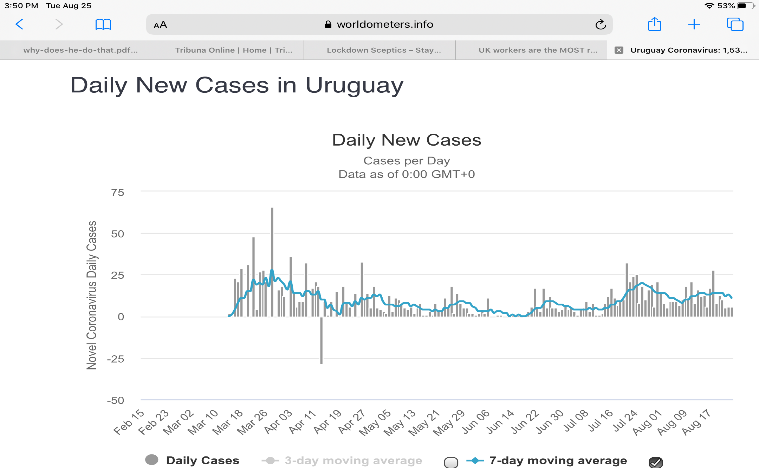
No lockdown.
Oh, and Bolsonaro the butcher? The man leading the Brazilian people to the slaughterhouse? He just hit his highest approval rating since the election.
Brazil is a land of lockdown skeptics, Covid deniers, and miracle cure enthusiasts, and many Brazilians feel pretty happy with their leadership, despite the death toll. While everyone else is gearing up for the second wave, we are looking forward to getting back to normal when the epidemic runs its natural course, vaccine or no vaccine. Maybe, just maybe, we can still have Carnival next year.











Donate
We depend on your donations to keep this site going. Please give what you can.
Donate TodayComment on this Article
You’ll need to set up an account to comment if you don’t already have one. We ask for a minimum donation of £5 if you'd like to make a comment or post in our Forums.
Sign UpLatest News
Next PostLatest News